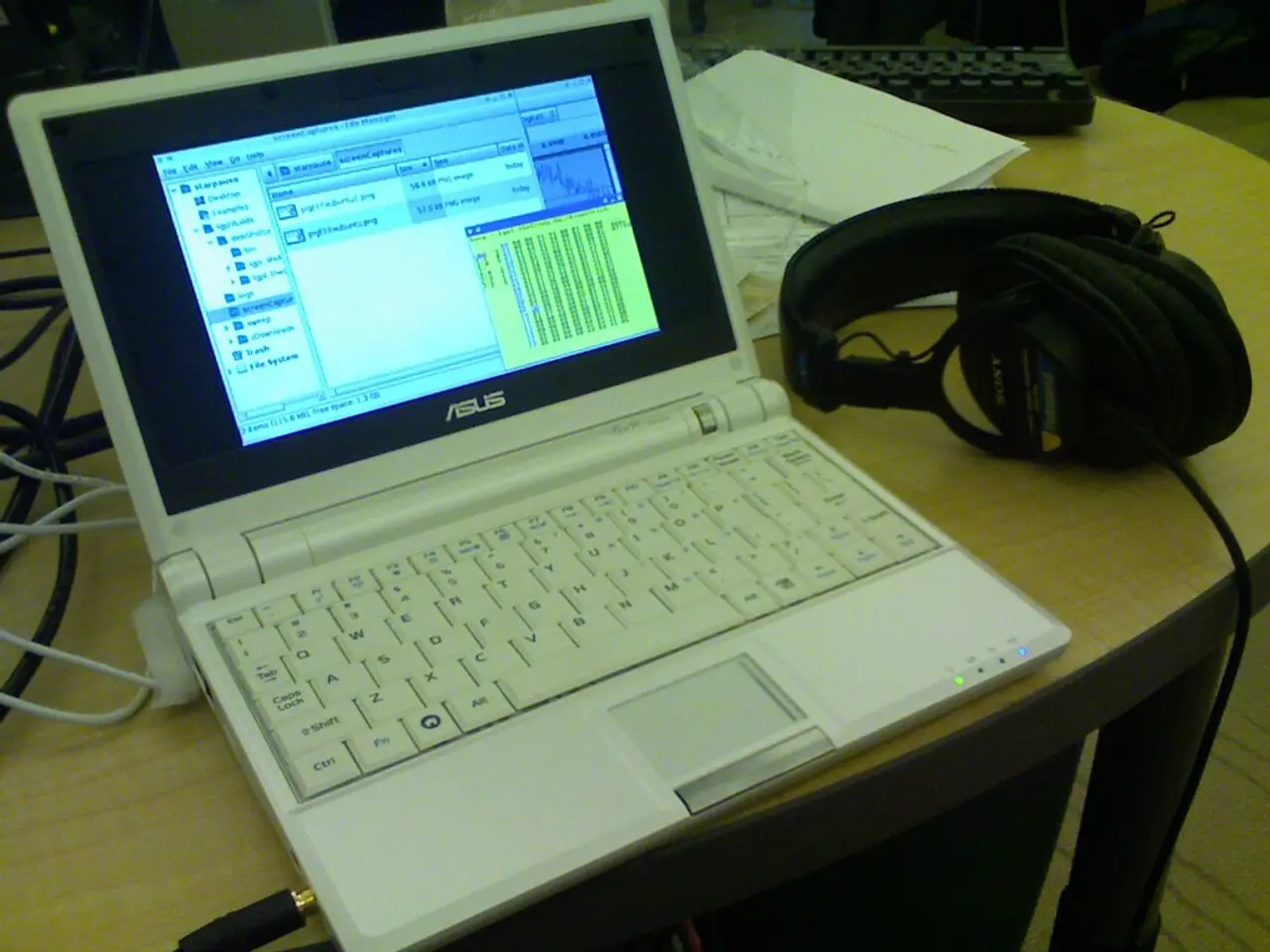ALS patient becomes first to manipulate iPad using brain signals via an implanted sensor
Man Overcomes ALS with Groundbreaking Brain-Computer Interface (BCI)
In a remarkable development, 65-year-old Man from western Pennsylvania, Jacksons, has regained his ability to interact with technology using a brain-computer interface (BCI) developed by the company Synchron. This innovative technology allows Jackson to control his iPad without the use of his hands or voice commands, offering a glimmer of hope for those living with debilitating conditions like Amyotrophic Lateral Sclerosis (ALS).
The Synchron BCI operates through a minimally invasive implant called the Stentrode, which is positioned inside a blood vessel near the motor cortex. This device detects Jackson's motor intention signals directly from his brain, wirelessly transmitting them to an external decoder. This decoder converts the brain signals into digital commands that communicate natively with Apple devices like an iPad and Apple Vision Pro, thanks to Apple's new Brain-Computer Interface Human Interface Device (BCI HID) protocol.
The system seamlessly integrates with Apple's Switch Control accessibility feature, allowing the brain signals to be translated into user interface (UI) actions on devices running iPadOS or other Apple operating systems. This means the iPad treats brain signals as if they were native input methods, similar to touch or voice. Moreover, the device and the BCI operate in a closed-loop feedback system, where the iPad shares real-time screen context with the BCI decoder, improving the accuracy and responsiveness of neural input interpretation.
For the Apple Vision Pro, the same principles of native BCI HID communication and motor intention decoding would allow users to control the device through thought, translating neural signals into UI commands. This leverages Apple's accessibility and interface protocols designed for seamless integration with brain signals.
The Synchron BCI has been tested in clinical trials with participants who have motor impairments, such as ALS, enabling them to control their iPads to navigate screens, open apps, and compose messages purely by thinking, without using hands, voice, or eyes. This groundbreaking technology has the potential to revolutionise the lives of millions of people worldwide.
Dr. Tom Oxley, founder and CEO of Synchron, stated that this version of the BCI uses a new Human Interface Device (HID) profile, allowing for a two-way communication between the computer and the BCI. However, the representative for Apple did not immediately respond to a request for comment regarding the BCI.
Synchron aims to restore the control of a touchscreen for patients with limited hand mobility using only their thoughts. They are preparing for a pivotal trial to prove the safety and effectiveness of their BCI, a process that will likely take several years. Jackson hopes his success with the BCI will give hope to others in similar situations and help advance technology for future use.
Unanswered questions about BCIs include potential long-term consequences, data privacy concerns, and the safety and effectiveness of the technology. Research into BCIs has grown rapidly due to the use of artificial intelligence (AI), and ongoing advancements may address these concerns in the near future.
[1] Synchron (2022). Synchron Brain-Computer Interface (BCI). Retrieved from https://synchron.health/
[2] Synchron (2022). Stentrode. Retrieved from https://synchron.health/technology/stentrode/
[3] Synchron (2021). Synchron Completes Successful Clinical Trial of Stentrode. Retrieved from https://synchron.health/news/synchron-completes-successful-clinical-trial-of-stentrode/
[4] Apple (2022). Brain-Computer Interface Human Interface Device (BCI HID) Protocol. Retrieved from https://developer.apple.com/documentation/uikit/brain-computer-interface-human-interface-device-bcihid-protocol
[5] Apple (2022). Switch Control. Retrieved from https://www.apple.com/accessibility/switch-control/
- The Synchron brain-computer interface (BCI) technology, which has shown promise in helping individuals with debilitating medical conditions like ALS, has been designed to work seamlessly with devices like iPads and Apple Vision Pro.
- In addition to controlling an iPad, the advancements in technology, such as Apple's Brain-Computer Interface Human Interface Device (BCI HID) protocol, will potentially allow users to control the Apple Vision Pro through thought, translating neural signals into UI commands.
- The health and wellness industry, particularly the medical-conditions sector, could experience a significant transformation as a result of further advancements in brain-computer interface (BCI) technology, potentially addressing ongoing questions about potential long-term consequences, data privacy concerns, and the safety and effectiveness of the technology.




